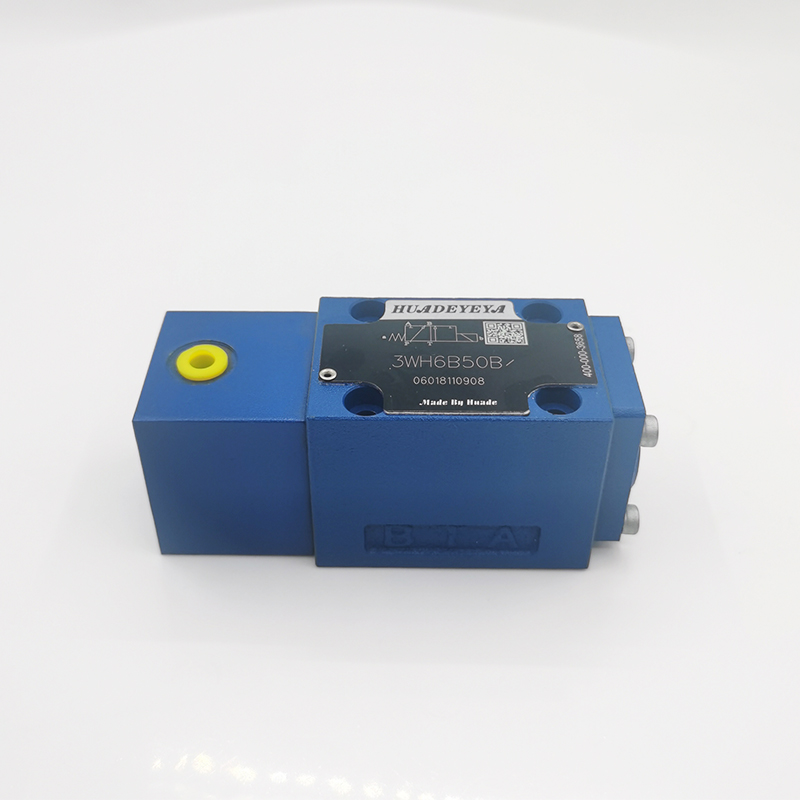Hydraulic directional control valves are essential components of hydraulic systems, regulating the flow direction of hydraulic fluid. These valves consist of various components that work together to control the movement of hydraulic actuators. In this article, we will explore the key components of a hydraulic directional control valve, understanding their functions and importance in facilitating precise fluid flow control.
Valve Body: The valve body serves as the main structure of the directional control valve, housing all the internal components. It provides the necessary mounting points and connections for fluid inlet and outlet ports. The valve body is typically made of durable materials such as steel or cast iron to withstand the pressures and forces encountered in hydraulic systems.
Spool or Poppet: The spool or poppet is a movable element within the valve body that controls the flow of hydraulic fluid. In spool valves, the spool is a cylindrical component with various channels or grooves machined into it. By shifting the position of the spool, different ports are either connected or blocked, enabling fluid flow in specific directions. In poppet valves, spring-loaded poppets are used to regulate fluid flow by sealing or opening specific passages.

Actuation Mechanism: The actuation mechanism is responsible for moving the spool or poppet to control fluid flow. It can be manual, solenoid-operated, or pilot-operated, depending on the specific application and control requirements. Manual actuation involves a lever or knob that an operator manipulates to shift the spool. Solenoid-operated valves utilize an electromagnetic coil that generates a magnetic field, causing the spool to move when electric current is applied. Pilot-operated valves use hydraulic pressure to shift the spool, allowing for precise and remote control.
Ports and Connections: Hydraulic directional control valves have several ports and connections that facilitate fluid entry and exit. The inlet port receives pressurized hydraulic fluid from a pump or another power source. Outlet ports are connected to hydraulic actuators, such as cylinders or motors, directing the flow of fluid to control their movement. Additional ports, such as relief ports or auxiliary ports, may be present depending on the specific valve design and application.
Seals and O-Rings: Seals and O-rings play a crucial role in hydraulic directional control valves, ensuring leak-free operation and preventing fluid bypass. These components are typically made of elastomeric materials that provide a tight and reliable seal between the moving parts and the valve body. Proper selection and maintenance of seals and O-rings are essential to maintain the integrity and performance of the valve.
Springs and Pressure Adjustments: Some directional control valves incorporate springs to provide mechanical force or pressure adjustments. Springs can assist in returning the spool to its default position or provide a specific level of resistance for precise control. Pressure adjustment mechanisms, such as relief valves or pressure regulators, allow for setting and controlling the maximum pressure in the hydraulic system, ensuring safe and efficient operation.
Conclusion: The components of a hydraulic directional control valve work in harmony to regulate fluid flow in hydraulic systems. The valve body provides the structure, while the spool or poppet controls the flow direction. The actuation mechanism determines how the spool or poppet is moved, and the ports and connections facilitate fluid entry and exit. Seals, O-rings, springs, and pressure adjustments contribute to the reliability and efficiency of the valve. Understanding the functions and importance of these components allows for informed selection, installation, and maintenance of Huade hydraulic directional control valves. Proper integration of these components ensures precise control over fluid flow, enabling the smooth operation of hydraulic systems in various industries and applications.





Comments
All Comments ( 0 )